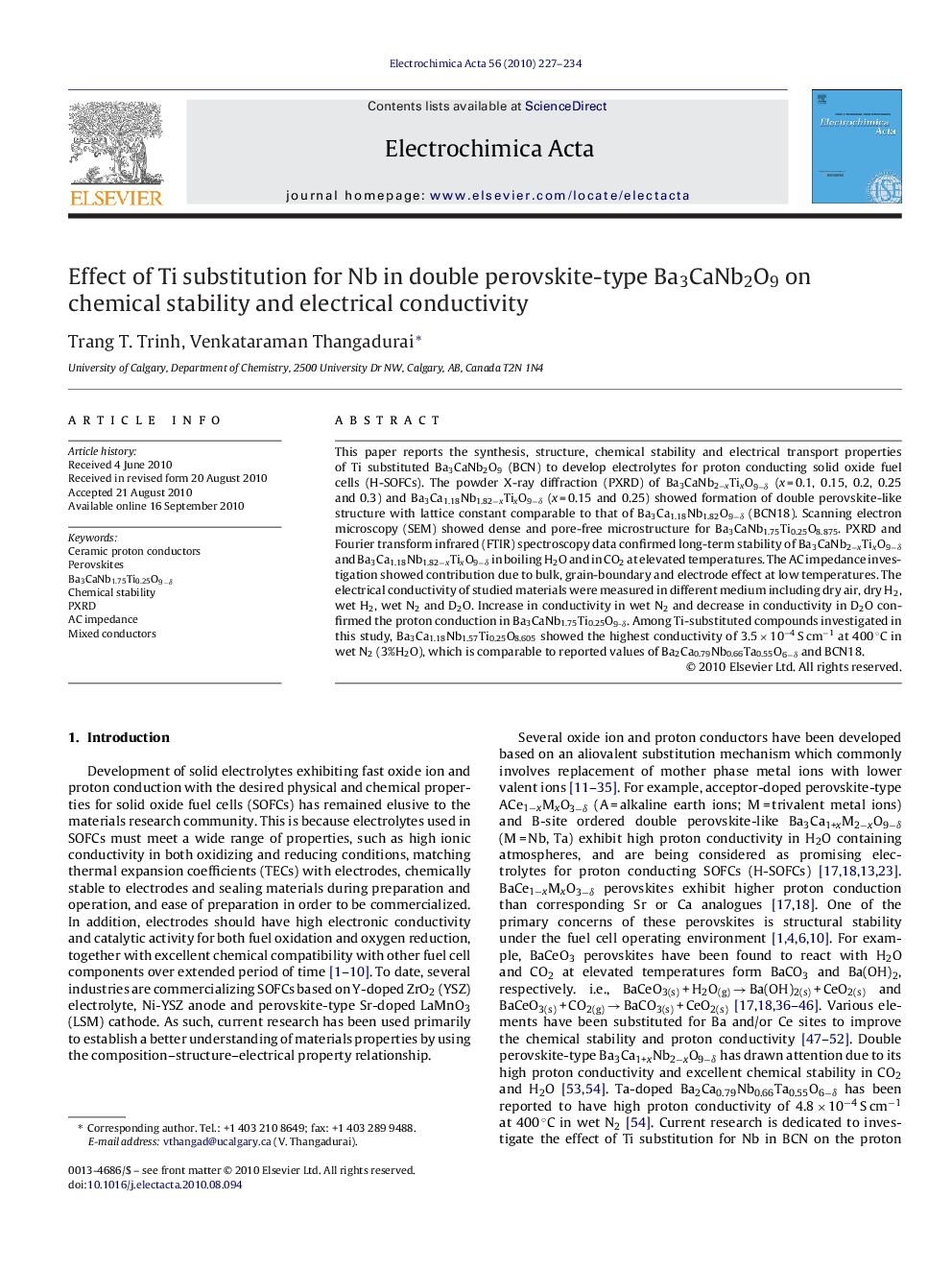| Article ID | Journal | Published Year | Pages | File Type |
|---|---|---|---|---|
| 190494 | Electrochimica Acta | 2010 | 8 Pages |
This paper reports the synthesis, structure, chemical stability and electrical transport properties of Ti substituted Ba3CaNb2O9 (BCN) to develop electrolytes for proton conducting solid oxide fuel cells (H-SOFCs). The powder X-ray diffraction (PXRD) of Ba3CaNb2−xTixO9−δ (x = 0.1, 0.15, 0.2, 0.25 and 0.3) and Ba3Ca1.18Nb1.82−xTixO9−δ (x = 0.15 and 0.25) showed formation of double perovskite-like structure with lattice constant comparable to that of Ba3Ca1.18Nb1.82O9−δ (BCN18). Scanning electron microscopy (SEM) showed dense and pore-free microstructure for Ba3CaNb1.75Ti0.25O8.875. PXRD and Fourier transform infrared (FTIR) spectroscopy data confirmed long-term stability of Ba3CaNb2−xTixO9−δ and Ba3Ca1.18Nb1.82−xTixO9−δ in boiling H2O and in CO2 at elevated temperatures. The AC impedance investigation showed contribution due to bulk, grain-boundary and electrode effect at low temperatures. The electrical conductivity of studied materials were measured in different medium including dry air, dry H2, wet H2, wet N2 and D2O. Increase in conductivity in wet N2 and decrease in conductivity in D2O confirmed the proton conduction in Ba3CaNb1.75Ti0.25O9-δ. Among Ti-substituted compounds investigated in this study, Ba3Ca1.18Nb1.57Ti0.25O8.605 showed the highest conductivity of 3.5 × 10−4 S cm−1 at 400 °C in wet N2 (3%H2O), which is comparable to reported values of Ba2Ca0.79Nb0.66Ta0.55O6−δ and BCN18.
